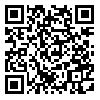BibTeX | RIS | EndNote | Medlars | ProCite | Reference Manager | RefWorks
Send citation to:
URL: http://journal.itrc.ac.ir/article-1-457-en.html
2- Faculty member of ICT Faculty Faculty of Post and Communications Tehran, Iran ,
Implementation of intrusion detection techniques in banking transactions in order to prevent fraudulent banking systems, especially electronic banking systems, is inevitable. The purpose of this research is to implement intrusion detection systems to detect phishing in the country's banking industry. In this regard, in this research, in order to protect banking information systems due to the combination of different IDS implementation methods in order to detect phishing and also the need to use PHISHING.IDS + ANFIS system by using Matlab programming environment, in order to increase trust. Also, the issue of the need for multiple expertise has been explored by simultaneously applying the knowledge of several experts in different fields to solve the problem of IDS implementation in order to detect phishing. In the present research, a neural-fuzzy inference system for the implementation of intrusion detection systems for phishing detection in the banking industry using the approach of artificial neural networks and fuzzy system, called PHISHING.IDS + is presented by ANIS program. In order to design a neural-fuzzy inference system and implement IDS in order to detect phishing, the most important outputs of statistical software are examined and analyzed in detail.
| Rights and permissions | |
 | This work is licensed under a Creative Commons Attribution-NonCommercial 4.0 International License. |




